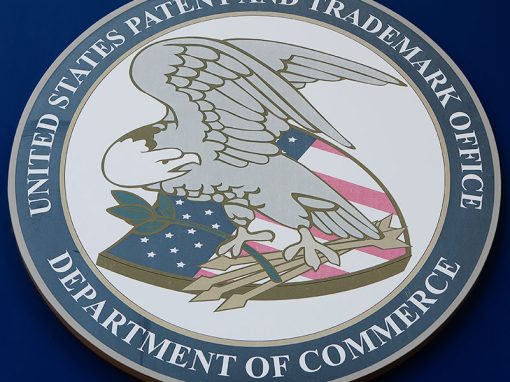NEW FEATURES OF THE AMERICA INVENTS ACT
The Leahy-Smith America Invents Act (AIA) was passed 16 September 2011 and is now coming into force. The intention of the AIA is to streamline the patenting process and to reduce legal costs. In addition the US Congress has taken this opportunity to bring US patent law into closer conformity with patent law in the rest of the world. We review some of the aspects of the AIA you may find useful to consider when filing or prosecuting a US patent application.
Prioritised Examination
As long as the patent claims are not too complex, and for a fee, the process of examination (and potentially grant) of a US patent can be accelerated.
Virtual Marking
Products should still be marked ‘patent’ or ‘pat.’ but can now also be marked with the address of a website maintained by the patent proprietor so that a third party can find the patent and see its current status.
Prior Commercial Use
Protection is to be expanded for innocent infringers who can prove their commercial use of an invention for at least one year prior to the filing date of the US patent being asserted against them. Currently this defence is only available for business methods but as of 16 March 2013 this defence will be available for all technologies.
‘Microentity’…
is a new class of applicant which is particularly suited to small inventors, i.e. being named as an inventor on fewer than five US patent applications. Qualifying as a microentity entitles an applicant to a 75% reduction in official fees.
Pre-issuance Submissions
From 16 September 2013 parties other than the applicant for a patent will be able to file printed publications of potential relevance to the examination of the patent. This has the potential to be a cheaper method of opposing a patent than mounting a legal action after grant.
Supplemental Examination
Under this procedure the USPTO will consider, reconsider or correct any information relevant to the patentability of an invention. This will be available from 16 September 2012, and is expensive, but offers the possibility of protecting against allegations of inequitable conduct against the US Patents and Trademarks Office.
Post-Grant Review
This is intended as an alternative to more-expensive litigation and is available from 16 September 2012. A request filed within nine months of the grant of a US patent may raise any issue of patentability with respect to the patent. The aim is to complete the review within one year of the request.
Right to Apply for a US Patent
Under current US practice the person who can prove that they were the first to “reduce the invention to practice” has the right to a US patent for that invention. However, a legal action to demonstrate who was ‘first to invent’ by this definition is expensive. Therefore, from 16 March 2013 the new US-style ‘first inventor to file’ system will be used. Under the new system it will be the first person to publically use or publish the invention who will have the right to apply for a US patent within a one year ‘grace period’ thereafter. Thus, the new law might therefore be better described as ‘first inventor to publish’.
Finally, we would be happy to provide more specific advice relating to any aspect of the AIA discussed above on request.









